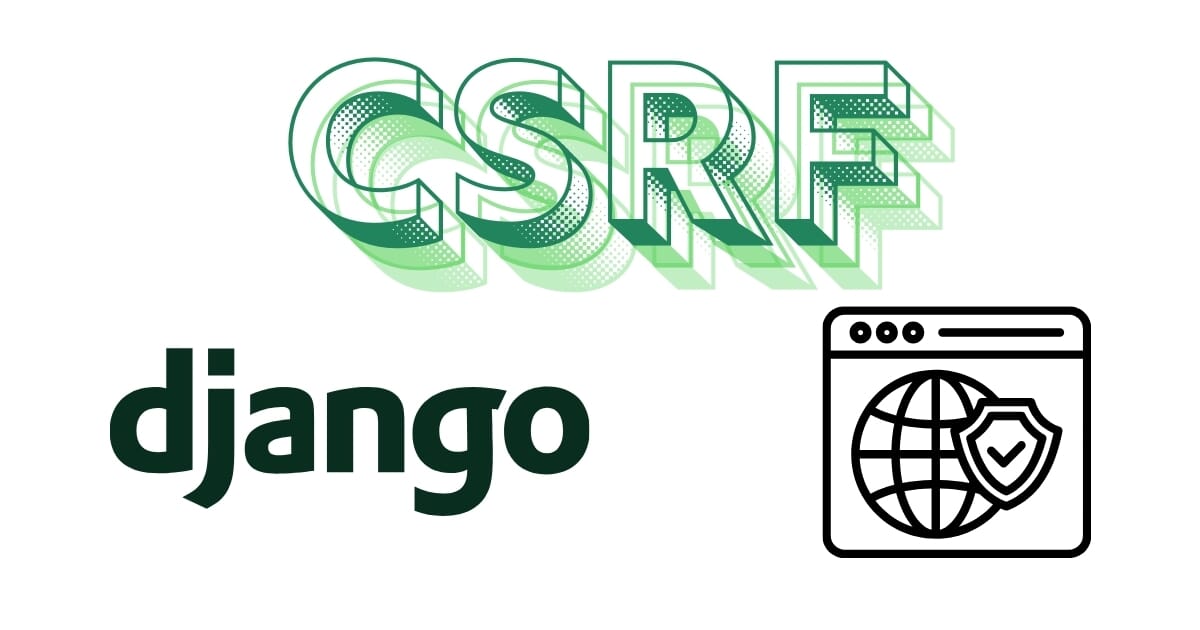🛡️ Practically Understand CSRF Token in Django
CSRF is one of the most common web fundamentals that every web developer must understand.
CSRF stands for Cross Site Request Forgery. As the name suggests, it involves a situation where a malicious site tricks a browser into sending a request to another site where the user is already authenticated.
If not understood and implemented properly, CSRF can open dangerous loopholes — like allowing someone to create, modify, or delete data without your user's consent.

🔧 Let's Build a CSRF Demo in Django
We’ll create a small Django project to understand CSRF in action — both with and without protection.
Step 1: Project Setup
django-admin startproject csrf_demo
cd csrf_demo
python manage.py startapp homeStep 2: Create a Model
from django.db import models
class Student(models.Model):
name = models.CharField(max_length=100)
roll = models.CharField(max_length=20)
address = models.TextField()python manage.py makemigrations
python manage.py migrateStep 3: Create Superuser
python manage.py createsuperuserStep 4: Create a CSRF-Exempt View
from django.views.decorators.csrf import csrf_exempt
from django.http import HttpResponse
from django.shortcuts import render
from .models import Student
@csrf_exempt
def create_student(request):
if request.method == "POST":
name = request.POST.get('name')
roll = request.POST.get('roll')
address = request.POST.get('address')
Student.objects.create(name=name, roll=roll, address=address)
return HttpResponse("New Student Created")
return render(request, 'create.html')Step 5: Setup Template
Make sure templates are configured in settings.py, and then create templates/create.html:
<h2>Create Student</h2>
<form method="post" action="">
<input type="text" name="name" placeholder="Name"><br>
<input type="text" name="roll" placeholder="Roll"><br>
<input type="text" name="address" placeholder="Address"><br>
<button type="submit">Create</button>
</form>Step 6: Configure URLs
from django.urls import path
from .views import create_student
urlpatterns = [
path('create/', create_student, name="create")
]Step 7: Run the Server
python manage.py runserverVisit: http://localhost:8000/create/
Folder structure
Browser interface
Open the file in a browser and click Submit. The form will be submitted without permission due to missing CSRF protection.
🕵️ Simulate a CSRF Attack
Create an HTML file outside your Django project and paste this:
<h3>This is the attacker site</h3>
<form action="http://localhost:8000/create/" method="post">
<input type="text" name="name" value="Hacked"><br>
<input type="text" name="roll" value="666"><br>
<input type="text" name="address" value="Unknown"><br>
<button type="submit">Submit</button>
</form>Open the file in a browser and click Submit. The form will be submitted without permission due to missing CSRF protection.
🔐 Now Let's Enable CSRF Protection
Remove @csrf_exempt from the view. Django now automatically protects the view by rejecting POST requests without a CSRF token.
Update your form template to include the CSRF token:
<form method="post" action="">
{% csrf_token %}
<input type="text" name="name" placeholder="Name"><br>
<input type="text" name="roll" placeholder="Roll"><br>
<input type="text" name="address" placeholder="Address"><br>
<button type="submit">Create</button>
</form>Now the form is protected, and attackers can't forge a request without the secret CSRF token.
Same request will show this page:







No comments yet. Be the first to comment!